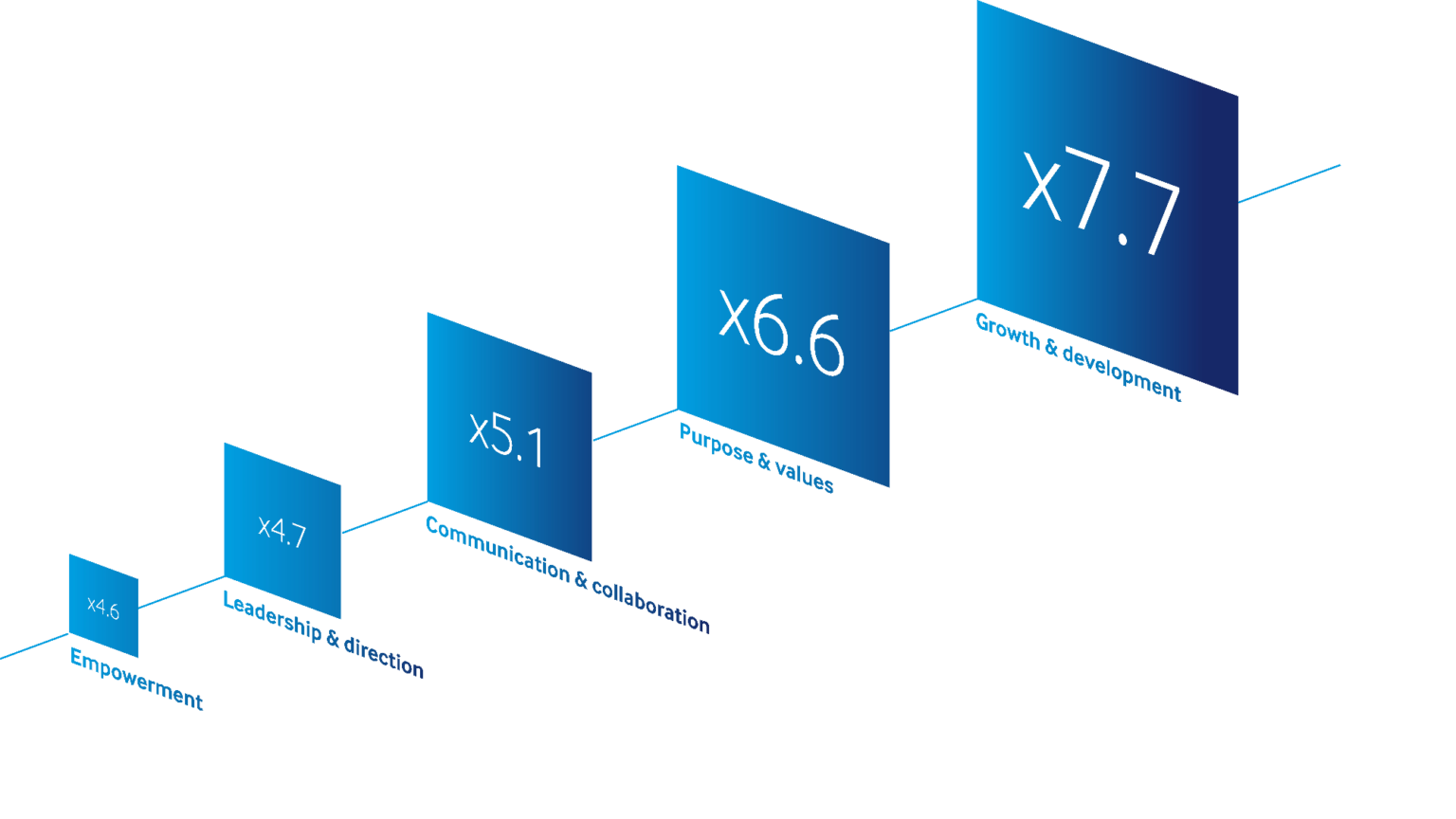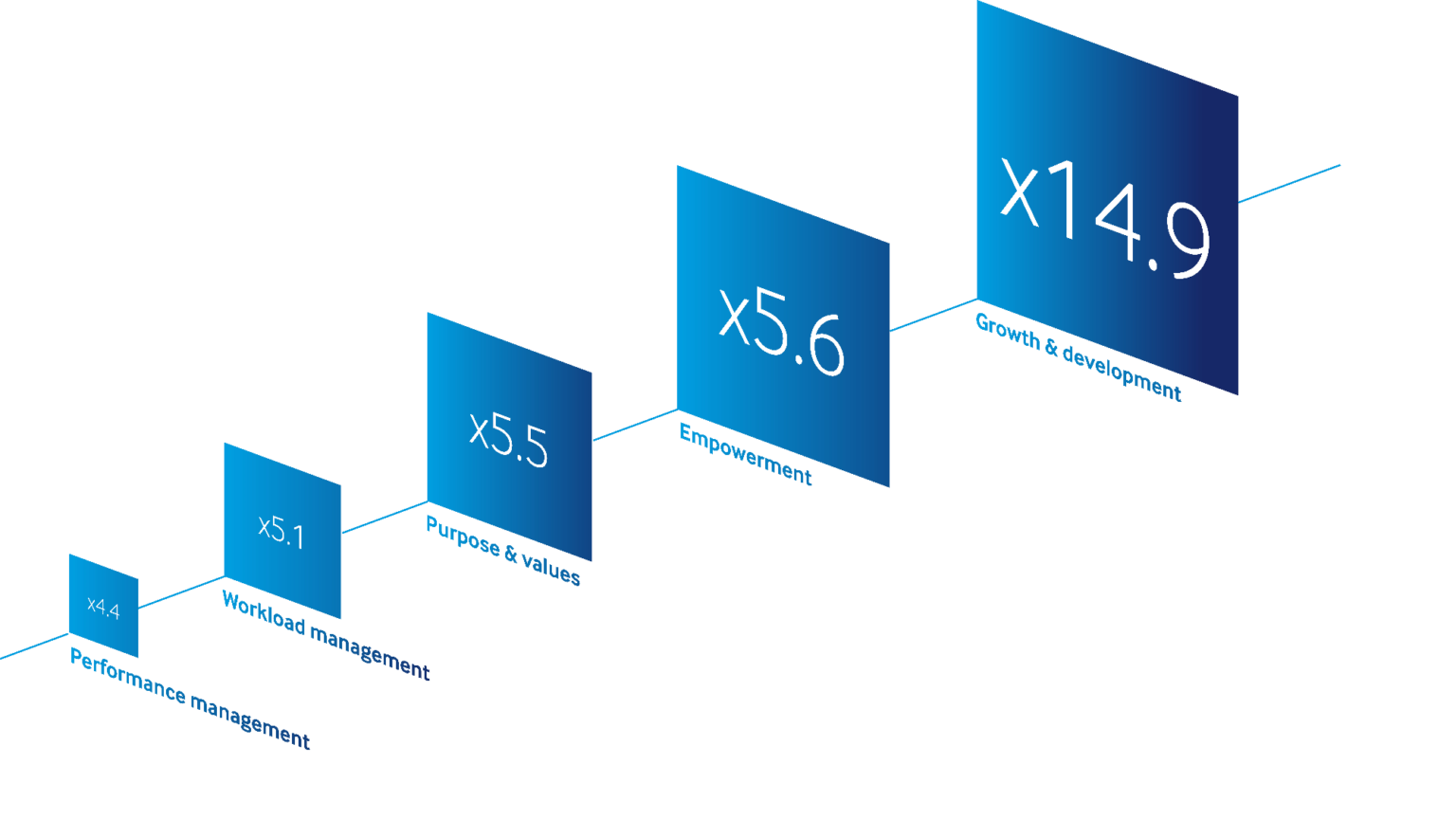Employee attrition rates are growing fast. You just need to Google ‘retention’ to be hit with endless studies and statistics that support the theory of the ‘Great Resignation’.
And it’s not just frontline employees who are fuelling this trend. Organisations are losing leaders and managers too. Losing people at every level is significant for any business – affecting continuity, stability and productivity. Left unchecked, high attrition rates can also impact culture and engagement, the pillars of an organisation that can be hard to rebuild.
So, how we can understand why people are leaving? And what can we do to stop it?
Understanding the diverse drivers of retention
First, we need to recognise that the drivers of retention are not the same for everyone. What keeps your frontline employees with you can be very different to what keeps your managers, which in turn is different to what keeps your leaders.
Our ENGAGE Retentionomics approach shows that there are key differences in what organisations must do to hold onto people at different levels. Data from a major global brand in the food and drink sector underlines this, highlighting the five key factors driving retention of their frontline people:

Working with the organisation, we found that investing in these five core areas – with specific approaches for each – was the fastest and most effective way to deliver the employee experience (EX) that frontline employees wanted. The better their EX, the more likely they were to stay engaged and the more likely the company was to retain their talent for the long-term.
Where managers differ
As the graphic shows, the factors that are most likely to impact manager retention vary from those that impact frontline employees.

While growth and development is the top retention factor for both, it has nearly twice as much impact on whether managers stay. And while workload management and performance management are significant retention factors for managers, neither is a core driver for frontline employees.
What these results show is that organisations must segment their approach to retention in order to hold onto their best talent at every level of the business.
Taking a segmented retention approach
Understanding which retention factors are common to multiple groups is the first step – but understanding how these factors are nuanced for each group is also critical. In our example, there are three common factors for both employees and managers – but with some nuances:
- Growth and development assesses whether people feel they can grow and take the next step of their career at the company. Those who do are much more likely to stay – but this has twice the impact on manager retention as on employees.
- Purpose and values looks at whether people are inspired by the company’s purpose and commitments and see corporate values lived across the business. Employees and managers alike who feel this will stick with the organisation for the long-term.
- Empowerment assesses whether people feel empowered to make decisions, take risks and speak up to challenge. Again, these are significant retention factors for both employees and managers.
The next step is to understand where factors are entirely different for particular groups. For employees in our example, there are two additional factors that need tackling:
- Communication and collaboration: for those on the frontline, a strong sense of teamwork, feeling they are working towards common goals and belief that communications are effective in is driving people to stay.
- Leadership and direction: employees who have confidence in the leadership of and strategy for the company are more likely to still be with the organisation in three to five years’ time.
But for managers, the differentiating factors for retention are:
- Workload management: issues such as feeling in control of their workload, achieving work-life balance, and feeling both they and their teams are well equipped to do the best job possible all matter in whether they will stay with the company.
- Performance management: knowing what is expected of them at work, being clear on how performance gets evaluated and whether performance reviews give them useful feedback to help do their job better are critical to retention.
What can we learn from the data?
So, we know retention factors are different. And we know what those factors are. What now?
The critical final step is to put into place retention strategies that directly target those areas, in the way that different groups need them to be implemented.
For example, growth and development matters if you want to keep any employee or manager in your organisation. But it is extremely high impact with managers: the desire for growth doesn’t stop when people hit managerial level in their career (in fact it heightens). The action? Implement clear manager development programmes, aimed at honing and advancing manager skills that will help them move into leadership roles.
Frontline employees, meanwhile, have to have faith in how they are being led and have confidence in where the company is headed. Leadership matters. And they must feel they are working collaboratively to want to stick with their employer. The action? Ensure clear, regular and open communication (two way) between leaders and the frontline. Deliver regular updates on examples of how values are being lived. Recognise and reward behaviours at all levels that emphasise culture, values and purpose.
The list goes on. And critically, the list will vary for every organisation. What all organisations must learn, though, is that it’s only by understanding all the drivers of retention across their business, at every level, that they can implement cohesive, targeted retention strategies.
Our Retentionomics approach does exactly this, using data to assess what factors are creating a greater intent to leave the organisation amongst key talent groups. Using this approach, we can model which factors are early warning indicators or red flags around talent loss, allowing organisations to identify the priority areas they should tackle to drive retention.
To find out more, feel free to download a PDF factsheet about ENGAGE’s Retentionomics solution or get in touch to talk to one of the team about how this might be of help to your organisation.